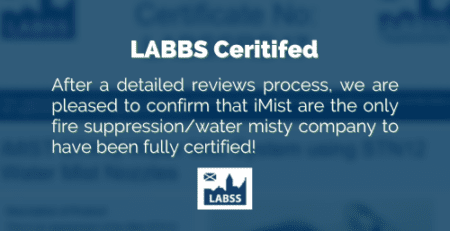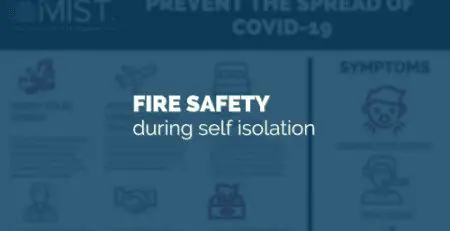Your Guide to Fire Suppression During Your Planning Phase
When building or renovating your home, fire safety might not be the first thing on your mind, but it should be. Planning fire suppression early can protect your home, your loved ones, and your investment. This comprehensive guide will help you understand the importance of fire suppression and how to integrate it into your home during the planning phase, ensuring it aligns with your project timeline and dream home goals.
When Might You Need Fire Suppression in Your New Build or Renovation?
1. Open-Plan Layouts
Modern open-plan designs allow fires to spread quickly due to a lack of separation. Building Control Officers typically recommend enhanced safety measures such as escape routes, fire doors, fire-rated glass, and fire suppression systems. Fire suppression provides a critical layer of protection by containing fires before they escalate, allowing you and your loved ones to escape safely.
2. Multiple Storeys
Homes with three or more storeys, including loft conversions, often require fire suppression to meet building regulations and ensure safe evacuation routes. Without fire separation, stairwells can act like chimneys, accelerating the spread of fire and making containment more challenging.
3. Basements and Extensions
Adding a basement or large extension may require fire suppression to safeguard these hard-to-access areas and comply with local building regulations.
4. Heritage or Listed Properties
Renovating older or listed buildings often involves strict fire safety standards. High-pressure mist systems offer discreet, effective protection without compromising the property’s historic character.
5. Remote or Rural Homes
If your property is in a remote location with limited access for emergency services, fire suppression is a vital safety measure while awaiting assistance. Read Andy and Sandra’s story to learn how a fire in their remote home escalated while their local fire station took 29 minutes to arrive.
Why Fire Suppression Matters
House fires can spread rapidly, causing devastating damage within minutes. A reliable fire suppression system is your first line of defence, containing and suppressing fires before they escalate. Beyond protecting your family and property, an effective system could lower your insurance premiums and increase your home’s value.
Types of Fire Suppression Systems
1. High-Pressure Water Mist Systems
High-pressure mist systems use fine water droplets to cool the fire, displace oxygen, and suppress flames. They require significantly less water than traditional sprinklers, reducing water damage. iMist’s high-pressure mist systems are ideal for modern homes due to their discreet design and efficiency.
2. Traditional Sprinkler Systems
These systems deliver large volumes of water to extinguish fires and are effective, but may cause significant water damage in the process.
3. Chemical Fire Suppression Systems
Often used in commercial settings, these systems release a chemical agent to suppress fires. While effective, they are less common in domestic properties due to their complexity and cost.
Key Considerations When Planning Fire Suppression
1. Compliance with Building Regulations
Ensure your chosen fire suppression system meets local building regulations. iMist systems comply with BS8458:2015 and are rigorously tested and accredited to meet industry standards.
2. System Integration
Plan how the fire suppression system will integrate with other infrastructure, like plumbing and electricity. Early collaboration with your architect or builder ensures a smooth installation.
3. Aesthetics and Design
Modern systems, such as iMist’s high-pressure mist solutions, are designed to blend seamlessly into your home with minimal visual impact. iMist even offers nozzles integrated with LED downlighters for seamless design.
4. Maintenance Requirements
Regular maintenance ensures your system remains fully operational. Discuss servicing options with your provider and budget for ongoing maintenance. iMist offer payment plans to allow you to spread the cost throughout the year.
Benefits of Early Planning
- Cost Efficiency: Installing fire suppression during construction is more cost-effective than retrofitting later. However, iMist’s flexible pipework also makes it an ideal solution for retrofits or future extensions.
- Customisation: Tailor the system to your home’s unique layout and specific fire risks. Blend the nozzles into your design seamlessly with our RAL coloured nozzles and 2-in-1 nozzle and downlighter option, Lumi-Mist.
- Peace of Mind: Knowing your home is protected allows you to focus on your project with confidence.
How iMist Can Help
At iMist, we specialise in high-pressure water mist systems that offer superior fire suppression with minimal disruption and water usage. Our expert team works closely with homeowners, architects, and builders to deliver bespoke solutions that meet both safety standards and design preferences.
If you’re planning your home, consider integrating a fire suppression system early. Contact iMist today to learn how we can help protect what matters most.











